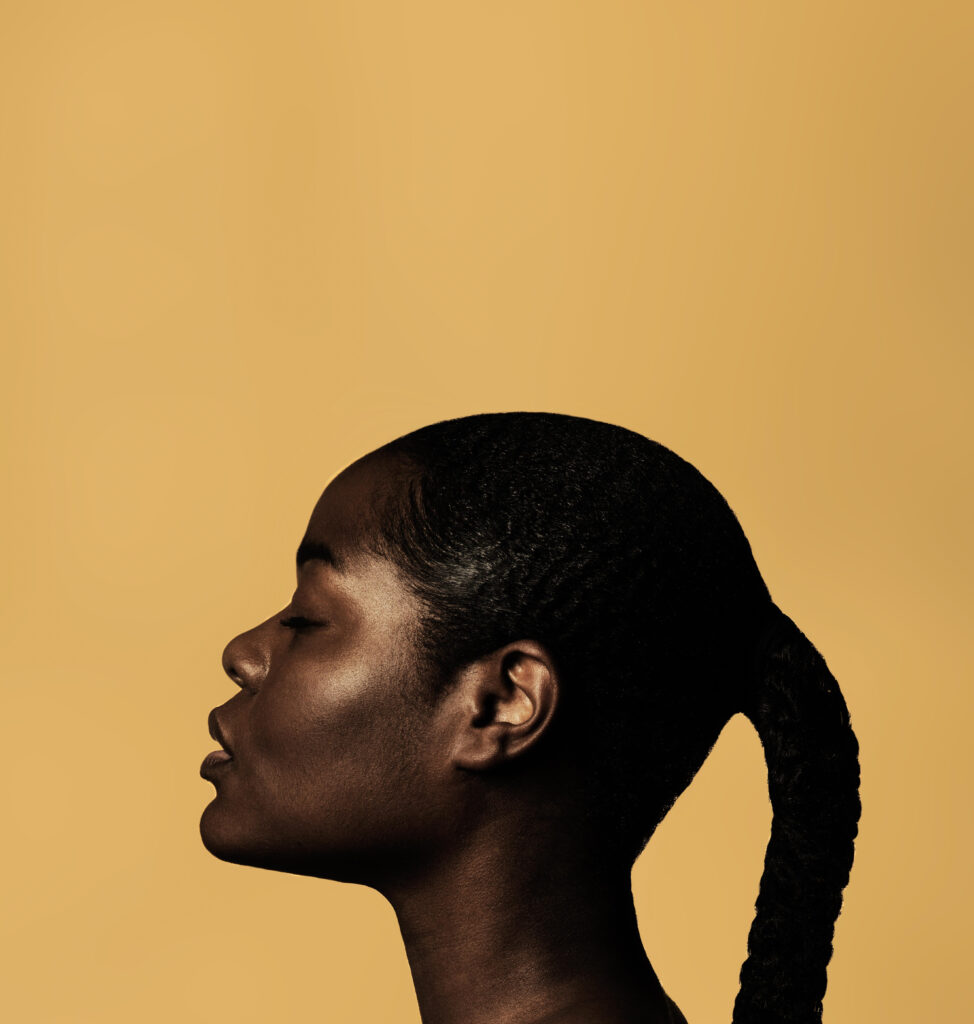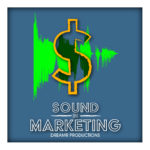Hearing Vs. Listening
There are two ways to perceive sound; by hearing and by listening. Both perceptions are important to the marketer for their dynamic sound range possibilities. However, it’s important to notate that they are very different from one another.
Everyone who is able to hear hears. Hearing is very passive. It’s when we actually listen that the message is processed and set to the subconscious. In audio marketing, both hearing and listening play a role. The trick is to know which one is being perceived at any given time.
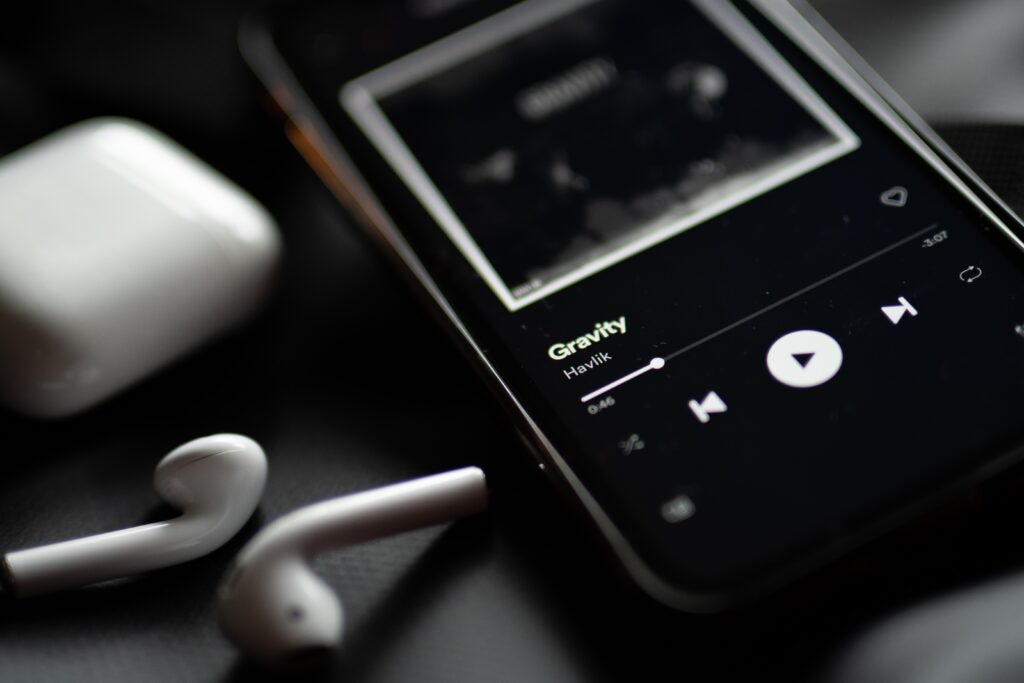
To help clarify, I was given some great examples by Katelyn Mueller, Associate Creative Director at SXM Media. When an ad plays during a music playlist experience, the listener is most likely hearing without listening. They are no doubt distracted with other tasks and sound is only a passive activity. “In this scenario, focusing on long term brand awareness rather than heavy messaging might be the best choice.”
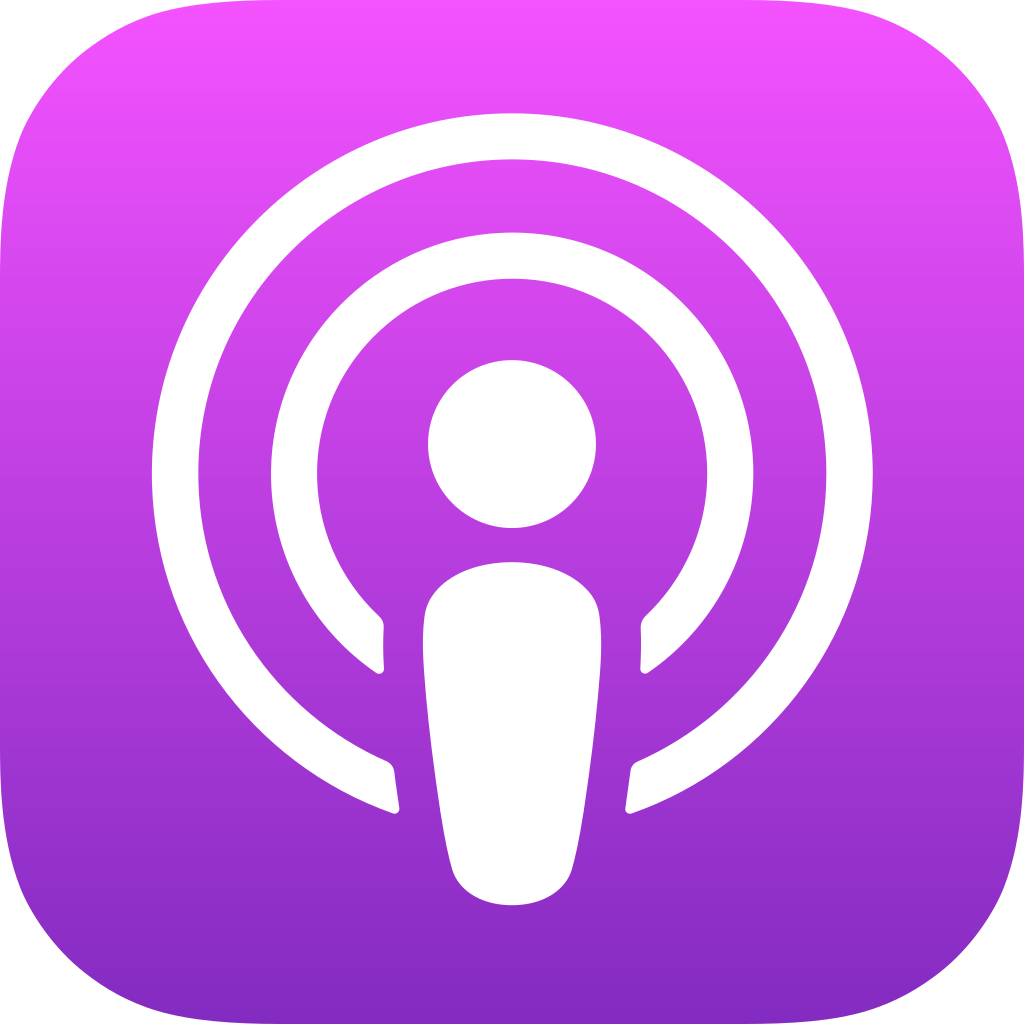
However, when your ad plays during a podcast, the listener is much more engaged with what is being presented to them. In this instance, “details and specifics work much better as the listener would be more inclined to act and purchase in a more short term time frame.”
The better we understand the difference between hearing and listening, the more creative and effective our audio ads can be.
Creative Ads
Creative advertising is not a new term but creative audio advertising might be. Studio Resonate, a niche team creating campaigns on Pandora, Stitcher, SiriusXM, Soundcloud and beyond know all about it. They create for advertisers within their SXM Media portfolio listed above. Always striving to do something different in audio advertising, they explore all sorts of dynamics in sound.
What Is Dynamic Sound
Dynamic sound in its simplest definition is, “the variations in loudness that occur in a passage of music”.
But it’s far more than that.
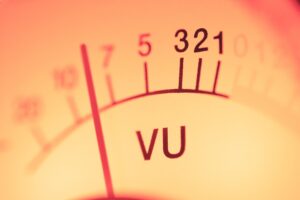
Sound dynamics is what makes sound interesting.
Dynamic sound is what sells products in radio and podcast ads. It is what makes or breaks an experience. With flat sound comes boredom and the loss of connection. People only care about what they feel connected to. If the sound has no feeling, there is no connection.
Although the official definition of dynamic sound hovers around loud and soft, I tend to see it in the form of dynamics in general, “constant change, activity, or progress”.
What if we were to see sound dynamics as “the creative decisions made within the loud and soft”?
Those creative decisions could be anything from:
- How prominently is the sound used (is it the focal point or is it for background).
- How uniquely is the sound presented (such as the use of the 3D audio technique).
- And, my favorite, how brand focused is the sound being created (is it a sound that creates recognition and awareness).
Blending the general definition of dynamics with dynamic sound’s definition is what I believe will blast a brand ahead in this sound universe.
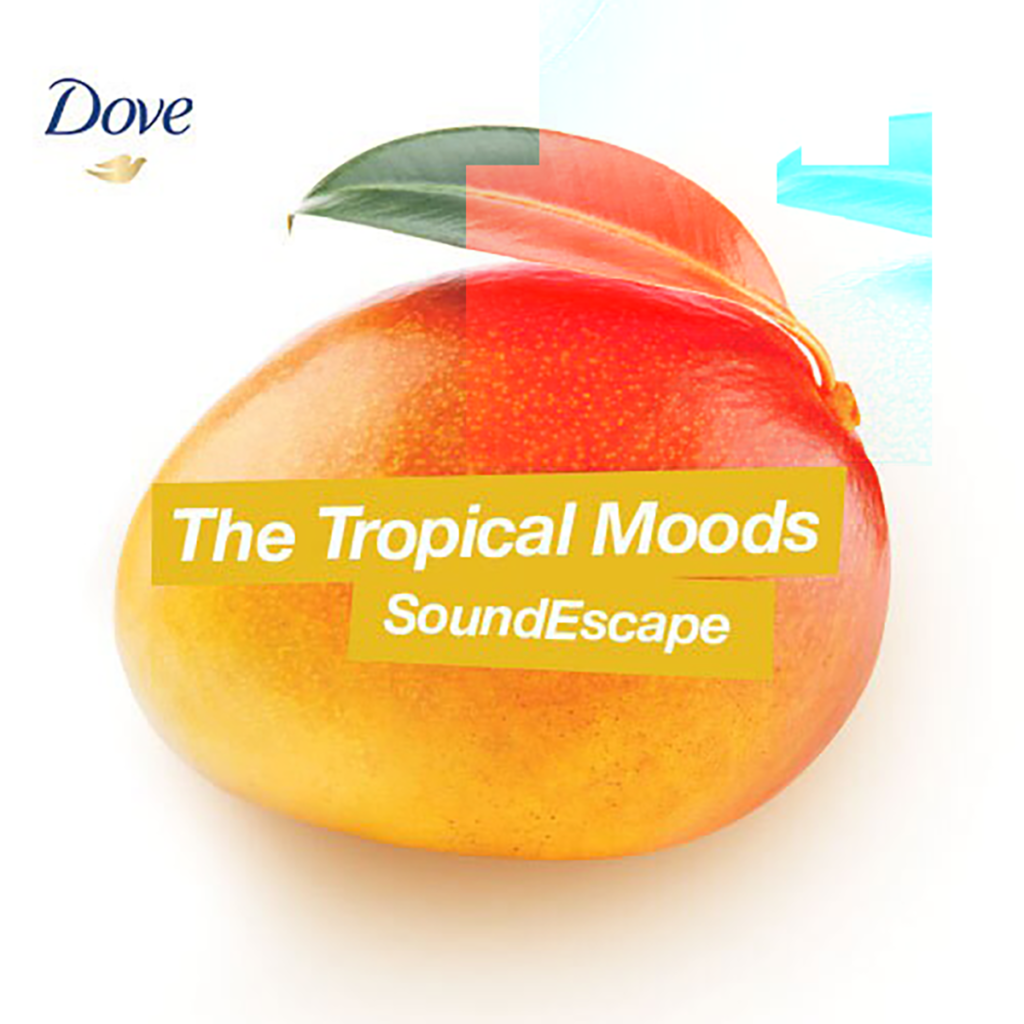
I’ve spoken about it before, but Dove did a great campaign focusing on a fully sensorial experience. This is a prime example of thinking creatively about the dynamics of your sound. Dove took an opportunity to make the sound a part of the experience; not just icing on the cake (more on that example to follow).
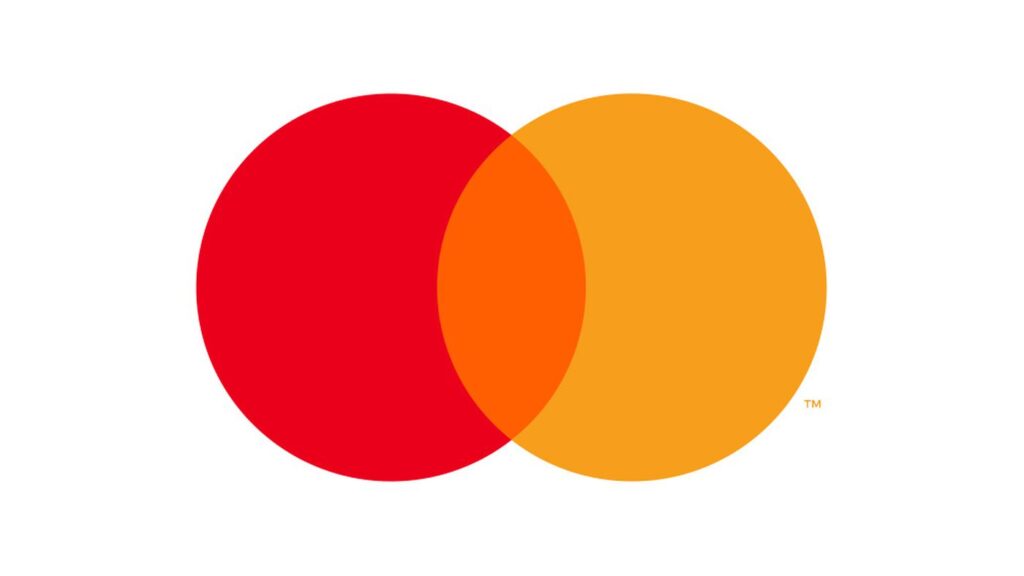
Another example is Mastercard and their 2022 music release. After creating an extensive toolkit of sonic branding, Mastercard created 10 tracks “inspired by” their sonic branding and released an album that premiered at Cannes. This use of dynamics is heavily brand focused. The sound is put center stage in more ways than one creating opportunity for connection and awareness galore.
A 3D Audio Experience
Honing in on dynamic range further, we turn to 3D audio. I spoke about this in my prior article on 3D Audio but wanted to talk more as there is so much to it. In order to fully process what 3D audio can do to an ad experience, I turned back to the team at Studio Resonate for some great examples they’ve produced.
Examples of Dynamic Audio Experiences

HelloFresh came to Studio Resonate looking to bring the sounds of cooking to life. Already familiar with sensorial marketing, I’m sure sound wasn’t too hard of a sell for them. Studio Resonate created an ad experience where the listener felt like they were dropped into the ad. Take a listen to the ads here and read about the campaign for reference.
They heard the sound of the sizzle and the chopping and the cooking; all in 3D. 16,000 Pandora listeners were surveyed for their reactions. Three different versions of the campaign were presented; one with VO, one with sound effects, and one with 3D sound design. All showed higher ad recall, brand sentiment, and higher purchase intent. These results were with or without headphones.

Q-Tips also did an interesting campaign demonstrating the many usages of their product by implementing the sound produced before and after a Q-tips use. Really brilliant illustration in my opinion and an excellent example of how 3D audio can tell the brand story in a clear and unique way.
In both examples, sound was used as an excellent demonstration of utility that both stimulates the senses and brings a heightened sense of connection and engagement.
Although these examples are great, not every story needs to be dimensionalized. 3D audio needs a “reason to be”, as Katelyn puts it in Studio Resonate’s webinar, 3D Audio: Beyond the Ears. With careful thought process and planning, 3D audio can be used as a beautiful enhancement to the product.
But only if the story comes first.
So how do we create stories in sound? One way in which I’ve been curious is by following the invisible sounds.
The Invisible Sounds
I’ve been fascinated by the idea of the invisible sounds all around us. They make a significant impact in our day to day and I think that with more careful consideration, brands could use this to their advantage within their dynamic ad experiences.
I define invisible sound as that experiential sound you unknowingly perceive while experiencing a programmed piece of content.

These sounds are unavoidable; people talking, birds chirping, planes, trains, and automobiles, etc. Unless you are in an anechoic chamber, you will experience these sounds in one form or another. They positively or negatively affect an experience.
Invisible sounds are unavoidable and determine if the listener has a good or a bad experience. If dynamic audio in general could harness these outliers and create purposeful ambient sounds within their brand story, what kind of an advantage would brands be looking at? This literally could set the tone to the listener’s experience.
Knowing when our audience is listening to the invisible sounds and when they are hearing them could be the key to building more relevant and cohesive dynamic sound experiences.
The invisible sounds we perceive, can make or break the success of a branded radio ad. So why not use them to our advantage?
Transformational Marketing
Transformational marketing is how we apply and implement these new ideas of thinking outside the box with the toolkit of supplies we already have at our disposal. The most transformational that I believe marketers can be in the next few years and decades is through their utilization of the senses in marketing; also known as sensory marketing.
The way sensory marketing works is that it employs the listeners perception and empathy to further develop the creative design of the brand’s unique identity. What one person perceives about a slice of chocolate cake is different from another person even when both love chocolate cake. Neither is wrong but both are defined uniquely.
Defining identity solely through words can be limiting.
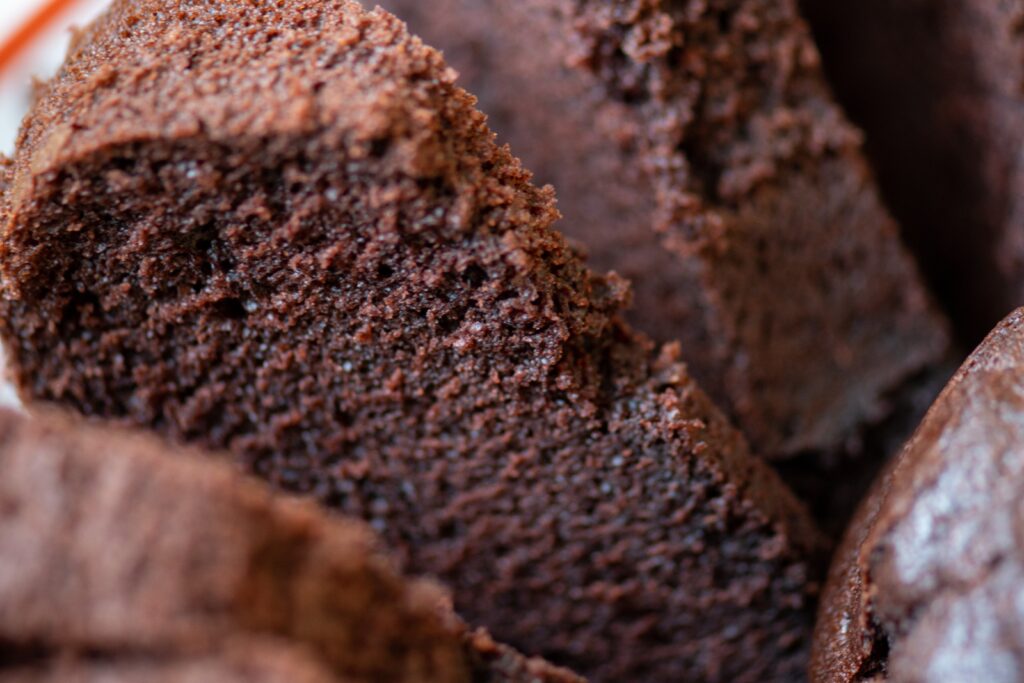
How Do You Define a Chocolate Cake?
When you use words to describe a slice of chocolate cake like rich or moist, you may be alienating chocolate cake aficionados that don’t relate to those descriptions. But if you use sound effects and potentially the invisible sounds, you widen the net of understanding. Everyone can relate to an oven timer going off, the sound of the oven door opening, someone sniffing and saying “hmm”, and the clinking of cutlery as you hear a knife slicing through something obviously soft. These sound images allow for individual interpretation as well as a mass audience appeal.
Using words drives the idea, but it won’t immerse the listener into the story itself.
When you only have a 30 second spot (potentially less) to tell your story within streaming music, every second matters. Sound and experience support the words and drive the message home into our hearts and subconscious where we can revisit it again and again.
Let’s follow the sound to create a stronger, more memorable brand.
**For more on 3D audio ads, check out what Studio Resonate has been working on as well as their 3D Audio blog here. To learn more about the team, click here. For part one of my conversation with Tanvi Phadke, click here.
(This article was originally published on Medium)
Related Articles on Sensory Marketing
[{"id":5953,"link":"https:\/\/www.dreamrproductions.com\/sound-strategy-for-brands-works\/","name":"sound-strategy-for-brands-works","thumbnail":{"url":"https:\/\/www.dreamrproductions.com\/wp-content\/uploads\/Cover-Photo-Why-Brands-Need-Sound-Strategy-scaled.jpg","alt":"silhouetted women holding large megaphone"},"title":"Sound Strategy For Brands Works","author":{"name":"Dreamr Productions","link":"https:\/\/www.dreamrproductions.com\/author\/jeanna\/"},"date":"Jan 16, 2025","dateGMT":"2025-01-16 23:49:43","modifiedDate":"2025-01-16 15:50:55","modifiedDateGMT":"2025-01-16 23:50:55","commentCount":"1","commentStatus":"open","categories":{"coma":"<a href=\"https:\/\/www.dreamrproductions.com\/category\/blog\/\" rel=\"category tag\">Blog<\/a>, <a href=\"https:\/\/www.dreamrproductions.com\/category\/blog\/sonic-branding-articles\/\" rel=\"category tag\">Sonic Branding<\/a>, <a href=\"https:\/\/www.dreamrproductions.com\/category\/blog\/sound-in-marketing-articles\/\" rel=\"category tag\">Sound In Marketing<\/a>","space":"<a href=\"https:\/\/www.dreamrproductions.com\/category\/blog\/\" rel=\"category tag\">Blog<\/a> <a href=\"https:\/\/www.dreamrproductions.com\/category\/blog\/sonic-branding-articles\/\" rel=\"category tag\">Sonic Branding<\/a> <a href=\"https:\/\/www.dreamrproductions.com\/category\/blog\/sound-in-marketing-articles\/\" rel=\"category tag\">Sound In Marketing<\/a>"},"taxonomies":{"post_tag":"<a href='https:\/\/www.dreamrproductions.com\/tag\/audio-branding\/' rel='post_tag'>audio branding<\/a><a href='https:\/\/www.dreamrproductions.com\/tag\/dreamer-productions\/' rel='post_tag'>dreamer productions<\/a><a href='https:\/\/www.dreamrproductions.com\/tag\/dreamr-productions\/' rel='post_tag'>dreamr productions<\/a><a href='https:\/\/www.dreamrproductions.com\/tag\/jeana-isham\/' rel='post_tag'>jeana isham<\/a><a href='https:\/\/www.dreamrproductions.com\/tag\/jeanna-isham\/' rel='post_tag'>Jeanna Isham<\/a><a href='https:\/\/www.dreamrproductions.com\/tag\/sensory-marketing\/' rel='post_tag'>sensory marketing<\/a><a href='https:\/\/www.dreamrproductions.com\/tag\/sonic-branding\/' rel='post_tag'>sonic branding<\/a><a href='https:\/\/www.dreamrproductions.com\/tag\/sound-in-marketing\/' rel='post_tag'>sound in marketing<\/a><a href='https:\/\/www.dreamrproductions.com\/tag\/sound-marketing\/' rel='post_tag'>sound marketing<\/a><a href='https:\/\/www.dreamrproductions.com\/tag\/sound-strategy\/' rel='post_tag'>sound strategy<\/a>"},"readTime":{"min":4,"sec":46},"status":"publish","excerpt":"All brands make sound. It's important to make sound on purpose. Sound strategy and sonic branding is the future of brand marketing."},{"id":5889,"link":"https:\/\/www.dreamrproductions.com\/what-if-vegas-had-a-sound-strategy\/","name":"what-if-vegas-had-a-sound-strategy","thumbnail":{"url":"https:\/\/www.dreamrproductions.com\/wp-content\/uploads\/kvnga-vBWsG91aR_U-unsplash-resize.jpg","alt":"casino slot machines all making a cacophony of sound"},"title":"Vegas' Winning Hand; Sound Strategy Changing Sin City For The Best","author":{"name":"Dreamr Productions","link":"https:\/\/www.dreamrproductions.com\/author\/jeanna\/"},"date":"Apr 25, 2024","dateGMT":"2024-04-25 21:26:47","modifiedDate":"2025-01-16 15:09:47","modifiedDateGMT":"2025-01-16 23:09:47","commentCount":"0","commentStatus":"open","categories":{"coma":"<a href=\"https:\/\/www.dreamrproductions.com\/category\/blog\/\" rel=\"category tag\">Blog<\/a>, <a href=\"https:\/\/www.dreamrproductions.com\/category\/blog\/sonic-branding-articles\/\" rel=\"category tag\">Sonic Branding<\/a>, <a href=\"https:\/\/www.dreamrproductions.com\/category\/blog\/sound-in-marketing-articles\/\" rel=\"category tag\">Sound In Marketing<\/a>","space":"<a href=\"https:\/\/www.dreamrproductions.com\/category\/blog\/\" rel=\"category tag\">Blog<\/a> <a href=\"https:\/\/www.dreamrproductions.com\/category\/blog\/sonic-branding-articles\/\" rel=\"category tag\">Sonic Branding<\/a> <a href=\"https:\/\/www.dreamrproductions.com\/category\/blog\/sound-in-marketing-articles\/\" rel=\"category tag\">Sound In Marketing<\/a>"},"taxonomies":{"post_tag":"<a href='https:\/\/www.dreamrproductions.com\/tag\/gambling\/' rel='post_tag'>gambling<\/a><a href='https:\/\/www.dreamrproductions.com\/tag\/las-vegas\/' rel='post_tag'>las vegas<\/a><a href='https:\/\/www.dreamrproductions.com\/tag\/slot-machines\/' rel='post_tag'>slot machines<\/a><a href='https:\/\/www.dreamrproductions.com\/tag\/vegas\/' rel='post_tag'>vegas<\/a>"},"readTime":{"min":7,"sec":49},"status":"publish","excerpt":"Could Vegas be even more successful with a sound strategy for individual casinos, hotels, game category in mind? Could they go from disorienting to inviting?"},{"id":5808,"link":"https:\/\/www.dreamrproductions.com\/left-coast-airlines-fake-case-study\/","name":"left-coast-airlines-fake-case-study","thumbnail":{"url":"https:\/\/www.dreamrproductions.com\/wp-content\/uploads\/Left-Coast-Airlines-Logo-scaled.jpg","alt":"Left Coast Airlines Logo"},"title":"Left Coast Airlines; A Sonic Branding Case Study","author":{"name":"Dreamr Productions","link":"https:\/\/www.dreamrproductions.com\/author\/jeanna\/"},"date":"Feb 5, 2024","dateGMT":"2024-02-05 20:24:47","modifiedDate":"2025-03-11 13:41:54","modifiedDateGMT":"2025-03-11 21:41:54","commentCount":"0","commentStatus":"open","categories":{"coma":"<a href=\"https:\/\/www.dreamrproductions.com\/category\/blog\/sound-in-marketing-articles\/\" rel=\"category tag\">Sound In Marketing<\/a>","space":"<a href=\"https:\/\/www.dreamrproductions.com\/category\/blog\/sound-in-marketing-articles\/\" rel=\"category tag\">Sound In Marketing<\/a>"},"taxonomies":{"post_tag":"<a href='https:\/\/www.dreamrproductions.com\/tag\/dreamer-productions\/' rel='post_tag'>dreamer productions<\/a><a href='https:\/\/www.dreamrproductions.com\/tag\/dreamr-productions\/' rel='post_tag'>dreamr productions<\/a><a href='https:\/\/www.dreamrproductions.com\/tag\/jeana-isham\/' rel='post_tag'>jeana isham<\/a><a href='https:\/\/www.dreamrproductions.com\/tag\/jeanna-isham\/' rel='post_tag'>Jeanna Isham<\/a><a href='https:\/\/www.dreamrproductions.com\/tag\/pepsico\/' rel='post_tag'>pepsico.<\/a><a href='https:\/\/www.dreamrproductions.com\/tag\/sensory-marketing\/' rel='post_tag'>sensory marketing<\/a><a href='https:\/\/www.dreamrproductions.com\/tag\/sonic-branding\/' rel='post_tag'>sonic branding<\/a><a href='https:\/\/www.dreamrproductions.com\/tag\/sound-in-marketing\/' rel='post_tag'>sound in marketing<\/a><a href='https:\/\/www.dreamrproductions.com\/tag\/sound-marketing\/' rel='post_tag'>sound marketing<\/a><a href='https:\/\/www.dreamrproductions.com\/tag\/sunchips\/' rel='post_tag'>sunchips<\/a>"},"readTime":{"min":6,"sec":23},"status":"publish","excerpt":"Left Coast Airlines hired Dreamr Productions to produce a branded podcast that advertised to both new and existing customers."},{"id":5780,"link":"https:\/\/www.dreamrproductions.com\/sun-chips-revenue-dropped-over-a-bag-design-blunder\/","name":"sun-chips-revenue-dropped-over-a-bag-design-blunder","thumbnail":{"url":"https:\/\/www.dreamrproductions.com\/wp-content\/uploads\/shutterstock_2270365737-sunchips-bags-resized-scaled.jpg","alt":"SunChips bags on shelf"},"title":"Sun Chips\u2019 Revenue Dropped 11% Over A Bag Design Blunder","author":{"name":"Dreamr Productions","link":"https:\/\/www.dreamrproductions.com\/author\/jeanna\/"},"date":"Jan 16, 2024","dateGMT":"2024-01-16 12:36:00","modifiedDate":"2024-01-15 16:36:45","modifiedDateGMT":"2024-01-16 00:36:45","commentCount":"0","commentStatus":"open","categories":{"coma":"<a href=\"https:\/\/www.dreamrproductions.com\/category\/blog\/sensory-marketing-articles\/\" rel=\"category tag\">Sensory Marketing<\/a>, <a href=\"https:\/\/www.dreamrproductions.com\/category\/blog\/sound-in-marketing-articles\/\" rel=\"category tag\">Sound In Marketing<\/a>","space":"<a href=\"https:\/\/www.dreamrproductions.com\/category\/blog\/sensory-marketing-articles\/\" rel=\"category tag\">Sensory Marketing<\/a> <a href=\"https:\/\/www.dreamrproductions.com\/category\/blog\/sound-in-marketing-articles\/\" rel=\"category tag\">Sound In Marketing<\/a>"},"taxonomies":{"post_tag":"<a href='https:\/\/www.dreamrproductions.com\/tag\/dreamer-productions\/' rel='post_tag'>dreamer productions<\/a><a href='https:\/\/www.dreamrproductions.com\/tag\/dreamr-productions\/' rel='post_tag'>dreamr productions<\/a><a href='https:\/\/www.dreamrproductions.com\/tag\/jeana-isham\/' rel='post_tag'>jeana isham<\/a><a href='https:\/\/www.dreamrproductions.com\/tag\/jeanna-isham\/' rel='post_tag'>Jeanna Isham<\/a><a href='https:\/\/www.dreamrproductions.com\/tag\/pepsico\/' rel='post_tag'>pepsico.<\/a><a href='https:\/\/www.dreamrproductions.com\/tag\/sensory-marketing\/' rel='post_tag'>sensory marketing<\/a><a href='https:\/\/www.dreamrproductions.com\/tag\/sonic-branding\/' rel='post_tag'>sonic branding<\/a><a href='https:\/\/www.dreamrproductions.com\/tag\/sound-in-marketing\/' rel='post_tag'>sound in marketing<\/a><a href='https:\/\/www.dreamrproductions.com\/tag\/sound-marketing\/' rel='post_tag'>sound marketing<\/a><a href='https:\/\/www.dreamrproductions.com\/tag\/sunchips\/' rel='post_tag'>sunchips<\/a>"},"readTime":{"min":5,"sec":45},"status":"publish","excerpt":"No sound is too small. Take the sound of the 2010 Sun Chips biodegradable bag. Too much sound created major problems with the brands' bottom line."},{"id":5778,"link":"https:\/\/www.dreamrproductions.com\/tiktok-ocean-spray-fleetwood-mac\/","name":"tiktok-ocean-spray-fleetwood-mac","thumbnail":{"url":"https:\/\/www.dreamrproductions.com\/wp-content\/uploads\/jeremy-bishop-_CFv3bntQlQ-unsplash-scaled.jpg","alt":"surfer riding a big wave"},"title":"TikTok, Ocean Spray, and Fleetwood Mac Get It- Do You?","author":{"name":"Dreamr Productions","link":"https:\/\/www.dreamrproductions.com\/author\/jeanna\/"},"date":"Jan 15, 2024","dateGMT":"2024-01-15 21:32:07","modifiedDate":"2024-01-15 13:32:09","modifiedDateGMT":"2024-01-15 21:32:09","commentCount":"0","commentStatus":"open","categories":{"coma":"<a href=\"https:\/\/www.dreamrproductions.com\/category\/blog\/sensory-marketing-articles\/\" rel=\"category tag\">Sensory Marketing<\/a>, <a href=\"https:\/\/www.dreamrproductions.com\/category\/blog\/sound-in-marketing-articles\/\" rel=\"category tag\">Sound In Marketing<\/a>","space":"<a href=\"https:\/\/www.dreamrproductions.com\/category\/blog\/sensory-marketing-articles\/\" rel=\"category tag\">Sensory Marketing<\/a> <a href=\"https:\/\/www.dreamrproductions.com\/category\/blog\/sound-in-marketing-articles\/\" rel=\"category tag\">Sound In Marketing<\/a>"},"taxonomies":{"post_tag":"<a href='https:\/\/www.dreamrproductions.com\/tag\/dreamer-productions\/' rel='post_tag'>dreamer productions<\/a><a href='https:\/\/www.dreamrproductions.com\/tag\/dreamr-productions\/' rel='post_tag'>dreamr productions<\/a><a href='https:\/\/www.dreamrproductions.com\/tag\/jeana-isham\/' rel='post_tag'>jeana isham<\/a><a href='https:\/\/www.dreamrproductions.com\/tag\/jeanna-isham\/' rel='post_tag'>Jeanna Isham<\/a><a href='https:\/\/www.dreamrproductions.com\/tag\/ocean-spray\/' rel='post_tag'>ocean spray<\/a><a href='https:\/\/www.dreamrproductions.com\/tag\/sensory-marketing\/' rel='post_tag'>sensory marketing<\/a><a href='https:\/\/www.dreamrproductions.com\/tag\/sonic-branding\/' rel='post_tag'>sonic branding<\/a><a href='https:\/\/www.dreamrproductions.com\/tag\/sound-in-marketing\/' rel='post_tag'>sound in marketing<\/a><a href='https:\/\/www.dreamrproductions.com\/tag\/sound-marketing\/' rel='post_tag'>sound marketing<\/a><a href='https:\/\/www.dreamrproductions.com\/tag\/tiktok\/' rel='post_tag'>tiktok<\/a>"},"readTime":{"min":4,"sec":19},"status":"publish","excerpt":"What does Nathan do when his TikTok goes viral for him, Ocean Spray, and Fleetwood Mac? They all just ride the wave."},{"id":5779,"link":"https:\/\/www.dreamrproductions.com\/powerful-sounds-of-a-cassette-tape\/","name":"powerful-sounds-of-a-cassette-tape","thumbnail":{"url":"https:\/\/www.dreamrproductions.com\/wp-content\/uploads\/shutupanddance-scaled.jpg","alt":"Paula Abdul cassette"},"title":"Powerful Sounds of A Cassette Tape and Other Sounds To Cherish","author":{"name":"Dreamr Productions","link":"https:\/\/www.dreamrproductions.com\/author\/jeanna\/"},"date":"Jan 11, 2024","dateGMT":"2024-01-11 23:54:12","modifiedDate":"2024-01-11 16:05:23","modifiedDateGMT":"2024-01-12 00:05:23","commentCount":"0","commentStatus":"open","categories":{"coma":"<a href=\"https:\/\/www.dreamrproductions.com\/category\/blog\/sensory-marketing-articles\/\" rel=\"category tag\">Sensory Marketing<\/a>, <a href=\"https:\/\/www.dreamrproductions.com\/category\/blog\/sound-in-marketing-articles\/\" rel=\"category tag\">Sound In Marketing<\/a>","space":"<a href=\"https:\/\/www.dreamrproductions.com\/category\/blog\/sensory-marketing-articles\/\" rel=\"category tag\">Sensory Marketing<\/a> <a href=\"https:\/\/www.dreamrproductions.com\/category\/blog\/sound-in-marketing-articles\/\" rel=\"category tag\">Sound In Marketing<\/a>"},"taxonomies":{"post_tag":"<a href='https:\/\/www.dreamrproductions.com\/tag\/dreamer-productions\/' rel='post_tag'>dreamer productions<\/a><a href='https:\/\/www.dreamrproductions.com\/tag\/dreamr-productions\/' rel='post_tag'>dreamr productions<\/a><a href='https:\/\/www.dreamrproductions.com\/tag\/jeana-isham\/' rel='post_tag'>jeana isham<\/a><a href='https:\/\/www.dreamrproductions.com\/tag\/jeanna-isham\/' rel='post_tag'>Jeanna Isham<\/a><a href='https:\/\/www.dreamrproductions.com\/tag\/sensory-marketing\/' rel='post_tag'>sensory marketing<\/a><a href='https:\/\/www.dreamrproductions.com\/tag\/sonic-branding\/' rel='post_tag'>sonic branding<\/a><a href='https:\/\/www.dreamrproductions.com\/tag\/sound-in-marketing\/' rel='post_tag'>sound in marketing<\/a><a href='https:\/\/www.dreamrproductions.com\/tag\/sound-marketing\/' rel='post_tag'>sound marketing<\/a>"},"readTime":{"min":5,"sec":45},"status":"publish","excerpt":"The sounds of a cassette tape were arguably more powerful and reminiscent than the music they actually played."},{"id":5697,"link":"https:\/\/www.dreamrproductions.com\/transformational-power-of-sonic-branding-stimulates-marketing-pitch\/","name":"transformational-power-of-sonic-branding-stimulates-marketing-pitch","thumbnail":{"url":"https:\/\/www.dreamrproductions.com\/wp-content\/uploads\/greg-rakozy-oMpAz-DN-9I-unsplash-scaled.jpg","alt":"man staring up at the stars at night"},"title":"The Transformational Power of Sonic Branding That Can Stimulate Your Marketing Pitch In Seconds","author":{"name":"Dreamr Productions","link":"https:\/\/www.dreamrproductions.com\/author\/jeanna\/"},"date":"Nov 10, 2023","dateGMT":"2023-11-10 16:42:02","modifiedDate":"2023-10-26 08:42:58","modifiedDateGMT":"2023-10-26 16:42:58","commentCount":"0","commentStatus":"open","categories":{"coma":"<a href=\"https:\/\/www.dreamrproductions.com\/category\/blog\/sensory-marketing-articles\/\" rel=\"category tag\">Sensory Marketing<\/a>, <a href=\"https:\/\/www.dreamrproductions.com\/category\/blog\/sonic-branding-articles\/\" rel=\"category tag\">Sonic Branding<\/a>, <a href=\"https:\/\/www.dreamrproductions.com\/category\/blog\/sound-in-marketing-articles\/\" rel=\"category tag\">Sound In Marketing<\/a>","space":"<a href=\"https:\/\/www.dreamrproductions.com\/category\/blog\/sensory-marketing-articles\/\" rel=\"category tag\">Sensory Marketing<\/a> <a href=\"https:\/\/www.dreamrproductions.com\/category\/blog\/sonic-branding-articles\/\" rel=\"category tag\">Sonic Branding<\/a> <a href=\"https:\/\/www.dreamrproductions.com\/category\/blog\/sound-in-marketing-articles\/\" rel=\"category tag\">Sound In Marketing<\/a>"},"taxonomies":{"post_tag":"<a href='https:\/\/www.dreamrproductions.com\/tag\/dreamer-productions\/' rel='post_tag'>dreamer productions<\/a><a href='https:\/\/www.dreamrproductions.com\/tag\/dreamr-productions\/' rel='post_tag'>dreamr productions<\/a><a href='https:\/\/www.dreamrproductions.com\/tag\/jeana-isham\/' rel='post_tag'>jeana isham<\/a><a href='https:\/\/www.dreamrproductions.com\/tag\/jeanna-isham\/' rel='post_tag'>Jeanna Isham<\/a><a href='https:\/\/www.dreamrproductions.com\/tag\/sensory-marketing\/' rel='post_tag'>sensory marketing<\/a><a href='https:\/\/www.dreamrproductions.com\/tag\/sonic-branding\/' rel='post_tag'>sonic branding<\/a><a href='https:\/\/www.dreamrproductions.com\/tag\/sound-in-marketing\/' rel='post_tag'>sound in marketing<\/a><a href='https:\/\/www.dreamrproductions.com\/tag\/sound-marketing\/' rel='post_tag'>sound marketing<\/a>"},"readTime":{"min":3,"sec":57},"status":"publish","excerpt":"Sonic branding is the extra bit of branding power that can send your brand identity into the stratosphere of notoriety and recollection."},{"id":5698,"link":"https:\/\/www.dreamrproductions.com\/sound-strategy-for-pharmaceutical-sales-holds-huge-opportunity-for-medicine\/","name":"sound-strategy-for-pharmaceutical-sales-holds-huge-opportunity-for-medicine","thumbnail":{"url":"https:\/\/www.dreamrproductions.com\/wp-content\/uploads\/hal-gatewood-iPl3q-gEGzY-unsplash-scaled.jpg","alt":"white pills against blue background"},"title":"Sound Strategy Transforms the Future of Pharmaceutical Sales","author":{"name":"Dreamr Productions","link":"https:\/\/www.dreamrproductions.com\/author\/jeanna\/"},"date":"Oct 27, 2023","dateGMT":"2023-10-27 16:58:12","modifiedDate":"2023-10-24 09:02:04","modifiedDateGMT":"2023-10-24 17:02:04","commentCount":"0","commentStatus":"open","categories":{"coma":"<a href=\"https:\/\/www.dreamrproductions.com\/category\/blog\/sensory-marketing-articles\/\" rel=\"category tag\">Sensory Marketing<\/a>, <a href=\"https:\/\/www.dreamrproductions.com\/category\/blog\/sonic-branding-articles\/\" rel=\"category tag\">Sonic Branding<\/a>, <a href=\"https:\/\/www.dreamrproductions.com\/category\/blog\/sound-in-marketing-articles\/\" rel=\"category tag\">Sound In Marketing<\/a>","space":"<a href=\"https:\/\/www.dreamrproductions.com\/category\/blog\/sensory-marketing-articles\/\" rel=\"category tag\">Sensory Marketing<\/a> <a href=\"https:\/\/www.dreamrproductions.com\/category\/blog\/sonic-branding-articles\/\" rel=\"category tag\">Sonic Branding<\/a> <a href=\"https:\/\/www.dreamrproductions.com\/category\/blog\/sound-in-marketing-articles\/\" rel=\"category tag\">Sound In Marketing<\/a>"},"taxonomies":{"post_tag":"<a href='https:\/\/www.dreamrproductions.com\/tag\/dreamer-productions\/' rel='post_tag'>dreamer productions<\/a><a href='https:\/\/www.dreamrproductions.com\/tag\/dreamr-productions\/' rel='post_tag'>dreamr productions<\/a><a href='https:\/\/www.dreamrproductions.com\/tag\/jeana-isham\/' rel='post_tag'>jeana isham<\/a><a href='https:\/\/www.dreamrproductions.com\/tag\/jeanna-isham\/' rel='post_tag'>Jeanna Isham<\/a><a href='https:\/\/www.dreamrproductions.com\/tag\/sensory-marketing\/' rel='post_tag'>sensory marketing<\/a><a href='https:\/\/www.dreamrproductions.com\/tag\/sonic-branding\/' rel='post_tag'>sonic branding<\/a><a href='https:\/\/www.dreamrproductions.com\/tag\/sound-in-marketing\/' rel='post_tag'>sound in marketing<\/a><a href='https:\/\/www.dreamrproductions.com\/tag\/sound-marketing\/' rel='post_tag'>sound marketing<\/a>"},"readTime":{"min":4,"sec":54},"status":"publish","excerpt":"Some pharmaceutical sales companies have found a way to stand out in a crowd by utilizing their branded sound with an actual marketing strategy."},{"id":5696,"link":"https:\/\/www.dreamrproductions.com\/sonic-branding-creates-action-in-marketing\/","name":"sonic-branding-creates-action-in-marketing","thumbnail":{"url":"https:\/\/www.dreamrproductions.com\/wp-content\/uploads\/mick-haupt-WXnBzI7AypY-unsplash-scaled.jpg","alt":"buying supplies and loading into car"},"title":"Sound and Sonic Branding Creates Action in Marketing","author":{"name":"Dreamr Productions","link":"https:\/\/www.dreamrproductions.com\/author\/jeanna\/"},"date":"Oct 23, 2023","dateGMT":"2023-10-23 15:33:06","modifiedDate":"2023-10-23 07:33:09","modifiedDateGMT":"2023-10-23 15:33:09","commentCount":"0","commentStatus":"open","categories":{"coma":"<a href=\"https:\/\/www.dreamrproductions.com\/category\/blog\/sensory-marketing-articles\/\" rel=\"category tag\">Sensory Marketing<\/a>, <a href=\"https:\/\/www.dreamrproductions.com\/category\/blog\/sonic-branding-articles\/\" rel=\"category tag\">Sonic Branding<\/a>, <a href=\"https:\/\/www.dreamrproductions.com\/category\/blog\/sound-in-marketing-articles\/\" rel=\"category tag\">Sound In Marketing<\/a>","space":"<a href=\"https:\/\/www.dreamrproductions.com\/category\/blog\/sensory-marketing-articles\/\" rel=\"category tag\">Sensory Marketing<\/a> <a href=\"https:\/\/www.dreamrproductions.com\/category\/blog\/sonic-branding-articles\/\" rel=\"category tag\">Sonic Branding<\/a> <a href=\"https:\/\/www.dreamrproductions.com\/category\/blog\/sound-in-marketing-articles\/\" rel=\"category tag\">Sound In Marketing<\/a>"},"taxonomies":{"post_tag":"<a href='https:\/\/www.dreamrproductions.com\/tag\/dreamer-productions\/' rel='post_tag'>dreamer productions<\/a><a href='https:\/\/www.dreamrproductions.com\/tag\/dreamr-productions\/' rel='post_tag'>dreamr productions<\/a><a href='https:\/\/www.dreamrproductions.com\/tag\/jeana-isham\/' rel='post_tag'>jeana isham<\/a><a href='https:\/\/www.dreamrproductions.com\/tag\/jeanna-isham\/' rel='post_tag'>Jeanna Isham<\/a><a href='https:\/\/www.dreamrproductions.com\/tag\/sensory-marketing\/' rel='post_tag'>sensory marketing<\/a><a href='https:\/\/www.dreamrproductions.com\/tag\/sonic-branding\/' rel='post_tag'>sonic branding<\/a><a href='https:\/\/www.dreamrproductions.com\/tag\/sound-in-marketing\/' rel='post_tag'>sound in marketing<\/a><a href='https:\/\/www.dreamrproductions.com\/tag\/sound-marketing\/' rel='post_tag'>sound marketing<\/a>"},"readTime":{"min":4,"sec":5},"status":"publish","excerpt":"Emotion is a super power that creates sales, word of mouth marketing, and loyal brand advocacy. Consider using sound in marketing to create longterm ROI for your brand."},{"id":5641,"link":"https:\/\/www.dreamrproductions.com\/sonic-branding-sound-made-on-purpose\/","name":"sonic-branding-sound-made-on-purpose","thumbnail":{"url":"https:\/\/www.dreamrproductions.com\/wp-content\/uploads\/elice-moore-E-AUpYXbjM-unsplash-scaled.jpg","alt":"upside down girl listening to headphones"},"title":"Sonic Branding is Sound Made On Purpose","author":{"name":"Dreamr Productions","link":"https:\/\/www.dreamrproductions.com\/author\/jeanna\/"},"date":"Oct 5, 2023","dateGMT":"2023-10-05 19:00:56","modifiedDate":"2023-10-05 11:00:58","modifiedDateGMT":"2023-10-05 19:00:58","commentCount":"0","commentStatus":"open","categories":{"coma":"<a href=\"https:\/\/www.dreamrproductions.com\/category\/blog\/sensory-marketing-articles\/\" rel=\"category tag\">Sensory Marketing<\/a>, <a href=\"https:\/\/www.dreamrproductions.com\/category\/blog\/sonic-branding-articles\/\" rel=\"category tag\">Sonic Branding<\/a>, <a href=\"https:\/\/www.dreamrproductions.com\/category\/blog\/sound-in-marketing-articles\/\" rel=\"category tag\">Sound In Marketing<\/a>","space":"<a href=\"https:\/\/www.dreamrproductions.com\/category\/blog\/sensory-marketing-articles\/\" rel=\"category tag\">Sensory Marketing<\/a> <a href=\"https:\/\/www.dreamrproductions.com\/category\/blog\/sonic-branding-articles\/\" rel=\"category tag\">Sonic Branding<\/a> <a href=\"https:\/\/www.dreamrproductions.com\/category\/blog\/sound-in-marketing-articles\/\" rel=\"category tag\">Sound In Marketing<\/a>"},"taxonomies":{"post_tag":"<a href='https:\/\/www.dreamrproductions.com\/tag\/dreamer-productions\/' rel='post_tag'>dreamer productions<\/a><a href='https:\/\/www.dreamrproductions.com\/tag\/dreamr-productions\/' rel='post_tag'>dreamr productions<\/a><a href='https:\/\/www.dreamrproductions.com\/tag\/jeana-isham\/' rel='post_tag'>jeana isham<\/a><a href='https:\/\/www.dreamrproductions.com\/tag\/jeanna-isham\/' rel='post_tag'>Jeanna Isham<\/a><a href='https:\/\/www.dreamrproductions.com\/tag\/sensory-marketing\/' rel='post_tag'>sensory marketing<\/a><a href='https:\/\/www.dreamrproductions.com\/tag\/sonic-branding\/' rel='post_tag'>sonic branding<\/a><a href='https:\/\/www.dreamrproductions.com\/tag\/sound-in-marketing\/' rel='post_tag'>sound in marketing<\/a><a href='https:\/\/www.dreamrproductions.com\/tag\/sound-marketing\/' rel='post_tag'>sound marketing<\/a>"},"readTime":{"min":6,"sec":59},"status":"publish","excerpt":"Through the art of sonic branding and sound in marketing, brands are able to strengthen their awareness, connection, and conversion with their consumers by making sound on purpose."},{"id":5640,"link":"https:\/\/www.dreamrproductions.com\/small-business-secret-sauce-ring-the-register-with-sound-branding\/","name":"small-business-secret-sauce-ring-the-register-with-sound-branding","thumbnail":{"url":"https:\/\/www.dreamrproductions.com\/wp-content\/uploads\/kristina-flour-BcjdbyKWquw-unsplash-scaled.jpg","alt":"hush"},"title":"Sound Branding is Small Businesses' Secret Sauce","author":{"name":"Dreamr Productions","link":"https:\/\/www.dreamrproductions.com\/author\/jeanna\/"},"date":"Oct 3, 2023","dateGMT":"2023-10-03 20:41:11","modifiedDate":"2023-10-03 12:41:14","modifiedDateGMT":"2023-10-03 20:41:14","commentCount":"0","commentStatus":"open","categories":{"coma":"<a href=\"https:\/\/www.dreamrproductions.com\/category\/blog\/sensory-marketing-articles\/\" rel=\"category tag\">Sensory Marketing<\/a>, <a href=\"https:\/\/www.dreamrproductions.com\/category\/blog\/sonic-branding-articles\/\" rel=\"category tag\">Sonic Branding<\/a>, <a href=\"https:\/\/www.dreamrproductions.com\/category\/blog\/sound-in-marketing-articles\/\" rel=\"category tag\">Sound In Marketing<\/a>","space":"<a href=\"https:\/\/www.dreamrproductions.com\/category\/blog\/sensory-marketing-articles\/\" rel=\"category tag\">Sensory Marketing<\/a> <a href=\"https:\/\/www.dreamrproductions.com\/category\/blog\/sonic-branding-articles\/\" rel=\"category tag\">Sonic Branding<\/a> <a href=\"https:\/\/www.dreamrproductions.com\/category\/blog\/sound-in-marketing-articles\/\" rel=\"category tag\">Sound In Marketing<\/a>"},"taxonomies":{"post_tag":"<a href='https:\/\/www.dreamrproductions.com\/tag\/dreamer-productions\/' rel='post_tag'>dreamer productions<\/a><a href='https:\/\/www.dreamrproductions.com\/tag\/dreamr-productions\/' rel='post_tag'>dreamr productions<\/a><a href='https:\/\/www.dreamrproductions.com\/tag\/jeana-isham\/' rel='post_tag'>jeana isham<\/a><a href='https:\/\/www.dreamrproductions.com\/tag\/jeanna-isham\/' rel='post_tag'>Jeanna Isham<\/a><a href='https:\/\/www.dreamrproductions.com\/tag\/sensory-marketing\/' rel='post_tag'>sensory marketing<\/a><a href='https:\/\/www.dreamrproductions.com\/tag\/sonic-branding\/' rel='post_tag'>sonic branding<\/a><a href='https:\/\/www.dreamrproductions.com\/tag\/sound-in-marketing\/' rel='post_tag'>sound in marketing<\/a><a href='https:\/\/www.dreamrproductions.com\/tag\/sound-marketing\/' rel='post_tag'>sound marketing<\/a>"},"readTime":{"min":3,"sec":53},"status":"publish","excerpt":"Small business has the opportunity to market through sound branding. With purposeful strategy, there is a huge opportunity for big returns."},{"id":5642,"link":"https:\/\/www.dreamrproductions.com\/sonic-branding-for-small-business-future-marketing\/","name":"sonic-branding-for-small-business-future-marketing","thumbnail":{"url":"https:\/\/www.dreamrproductions.com\/wp-content\/uploads\/goldengoose.png","alt":"music in marketing is the golden goose"},"title":"Sonic Branding For Small Business; The Golden Goose of Future Marketing","author":{"name":"Dreamr Productions","link":"https:\/\/www.dreamrproductions.com\/author\/jeanna\/"},"date":"Sep 23, 2023","dateGMT":"2023-09-23 14:08:11","modifiedDate":"2023-09-23 06:08:13","modifiedDateGMT":"2023-09-23 14:08:13","commentCount":"0","commentStatus":"open","categories":{"coma":"<a href=\"https:\/\/www.dreamrproductions.com\/category\/blog\/sensory-marketing-articles\/\" rel=\"category tag\">Sensory Marketing<\/a>, <a href=\"https:\/\/www.dreamrproductions.com\/category\/blog\/sonic-branding-articles\/\" rel=\"category tag\">Sonic Branding<\/a>, <a href=\"https:\/\/www.dreamrproductions.com\/category\/blog\/sound-in-marketing-articles\/\" rel=\"category tag\">Sound In Marketing<\/a>","space":"<a href=\"https:\/\/www.dreamrproductions.com\/category\/blog\/sensory-marketing-articles\/\" rel=\"category tag\">Sensory Marketing<\/a> <a href=\"https:\/\/www.dreamrproductions.com\/category\/blog\/sonic-branding-articles\/\" rel=\"category tag\">Sonic Branding<\/a> <a href=\"https:\/\/www.dreamrproductions.com\/category\/blog\/sound-in-marketing-articles\/\" rel=\"category tag\">Sound In Marketing<\/a>"},"taxonomies":{"post_tag":"<a href='https:\/\/www.dreamrproductions.com\/tag\/dreamer-productions\/' rel='post_tag'>dreamer productions<\/a><a href='https:\/\/www.dreamrproductions.com\/tag\/dreamr-productions\/' rel='post_tag'>dreamr productions<\/a><a href='https:\/\/www.dreamrproductions.com\/tag\/jeana-isham\/' rel='post_tag'>jeana isham<\/a><a href='https:\/\/www.dreamrproductions.com\/tag\/jeanna-isham\/' rel='post_tag'>Jeanna Isham<\/a><a href='https:\/\/www.dreamrproductions.com\/tag\/sensory-marketing\/' rel='post_tag'>sensory marketing<\/a><a href='https:\/\/www.dreamrproductions.com\/tag\/small-business\/' rel='post_tag'>small business<\/a><a href='https:\/\/www.dreamrproductions.com\/tag\/sonic-branding\/' rel='post_tag'>sonic branding<\/a><a href='https:\/\/www.dreamrproductions.com\/tag\/sound-in-marketing\/' rel='post_tag'>sound in marketing<\/a><a href='https:\/\/www.dreamrproductions.com\/tag\/sound-marketing\/' rel='post_tag'>sound marketing<\/a>"},"readTime":{"min":4,"sec":30},"status":"publish","excerpt":"The last thing small business needs is to waste their time and money on something ineffective and un-proven. Sonic branding is the marketing gift that keeps on giving. You can get back to the important job of landing more clients and customers while your sound is working for your brand in the background."}]
Ready to Create?
Dreamr Productions would love to help. Contact us today for more information.
